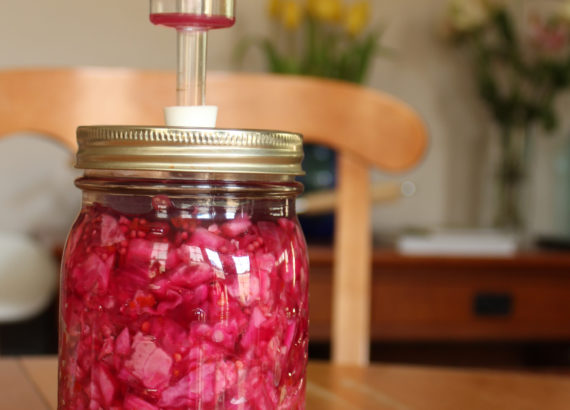Heritage Foods Revival
Angie Runyan | PC: Angie Runyan
PC: Angie Runyan No matter its simplicity or its complexity, a family recipe connects us to our heritage. Culinary traditions connect us to loved ones, to family history and to our own life stories. Food connects us to our environment, to the seasons, to our community.
Taste, smell, seasons and what’s on the table, the memories are connected for a lifetime. Food production has become increasingly distant from the tables where it is ultimately served. The annual corn on the cob I relished every summer as a child in eastern Nebraska was usually purchased at a local farm stand or a gift from neighbors who still had family farm connections just outside of town. That just around the block sweet corn is not available to me locally in the suburbs of Chicago and it has become increasingly difficult to find, even at peak season, in a local grocery store. The memory of a piping hot ear of corn slathered with melting butter is one that connects me to my beloved Cornhusker State despite the lack of any actual huskers having anything to do with fields of corn these days. Now the best place to find an active husker is in a field with goal posts, but I digress.
Many other heritage foods have found their way to the back burner (pun intended) or have been eliminated from the family table. At home, fermented foods is a prime example. Due to my interest in local food sources, food storage, food preservation, and nutrition, I have been exploring the process and benefits of fermented foods. While we never had a crock of fermenting veggies on the kitchen counter when I was a child (a tradition considered to be better left on the farm at that time), sauerkraut was still an element of my family’s imported German diet. Replaced with store bought convenience food, sauerkraut from a jar, heated on the stove was still a frequent side dish at dinner.
We are having a heritage food revival in our kitchen. Sauerkraut is making a comeback at our family table. Including it, I am reaching further back into family food traditions than the table of my childhood.
Including fermented foods in family meals provide benefits similar and in tandem to locally grown food. At home meal prep and preservation contributes to lower family food costs and increases self- sufficiency. Increased family culinary involvement, shared recipes, family tradition and community connection. Fermented foods have nutritional health benefits that are far superior to the prepackaged foods we’ve become accustomed to in the U.S. Many Heritage Foods have nutritional health benefits that are far superior to the prepackaged foods we’ve become accustomed to in the us.
The connection of traditional fermented foods to the environment drills down to the very most local level, the microscopic. The art of fermenting not only preserves certain foods for a longer shelf life but provides an environment for the beneficial microbes to flourish. It offers a way of maintaining the healthful beneficial bacteria we need to aid digestion that have been damaged by our dependence on processed foods. Fermenting and the related benefits have made a comeback into American diets. Whether aware of the specific microbes involved or not, the health benefits of fermented condiments were acknowledged by traditional preparers.
If we were to consider only the last generation or two as a part of our heritage, especially in terms of our food culinary heritage we would be missing some of the long term tried and true essentials that were beneficial, a huge part of our handed down food history, and in some cases a key component of a diet that contributed to health and sometimes even survival. My mother-in-law shared stories of starving and/or sick relatives during WWII regaining strength by following doctor’s orders of drinking cabbage juice every day. I’ve since added to my own understanding the likelihood that the cabbage juice was fermented.
In the U.S., the melting pot of ethnicities & cultures (can I still use that phrase?), many immigrants have maintained culinary traditions in spite of the need to assimilate in so many other ways. Our food traditions have become the foods of our multi-ethnic U.S. culture. The following sauerkraut recipe is from our European and eastern European heritage but there are a wide variety of fermented food traditions from around the world. Do you have one? Please, share. I’d love to try others.
Most recently, I’ve used this simple & basic recipe for sauerkraut from Nourishing Traditions by Sally Fallon. In this resource, she provides extensive info regarding fermented and many other traditional recipes. This sauerkraut has all the good microbes with a “kick” not from the fermenting, but from my addition of red pepper flakes. I also used the tools in a kit from Fermentools which includes a glass weight, a wide mouth jar lid with an air release attachment (available online). This gadget isn’t necessary but saves the need to “burp” the jar. It also makes it all feel more official and scientific. Enjoy!
Print
Sauerkraut
Description
Sauerkraut from Nourishing Traditions
by Sally Fallon
Ingredients
1 medium cabbage cored & shredded, 1 tablespoon caraway seeds, 1 tablespoon sea salt, 4 tablespoons whey, (or if not available an additional 1 tablespoon salt)
I added about 1/2 teaspoon red pepper flakes.
Instructions
Mix the chopped cabbage and caraway seeds, sea salt, and whey in a bowl. Pound with a wooden pounder or meat hammer to release juices. Place and press down firmly into a wide mouth mason jar until juices come to the top and cover the cabbage. Cabbage should be about 1 inch below the top of the jar. Cover tightly. Keep at room temperature for about 3 days then transfer to cold storage. Can be served immediately or allowed to improve with age.







